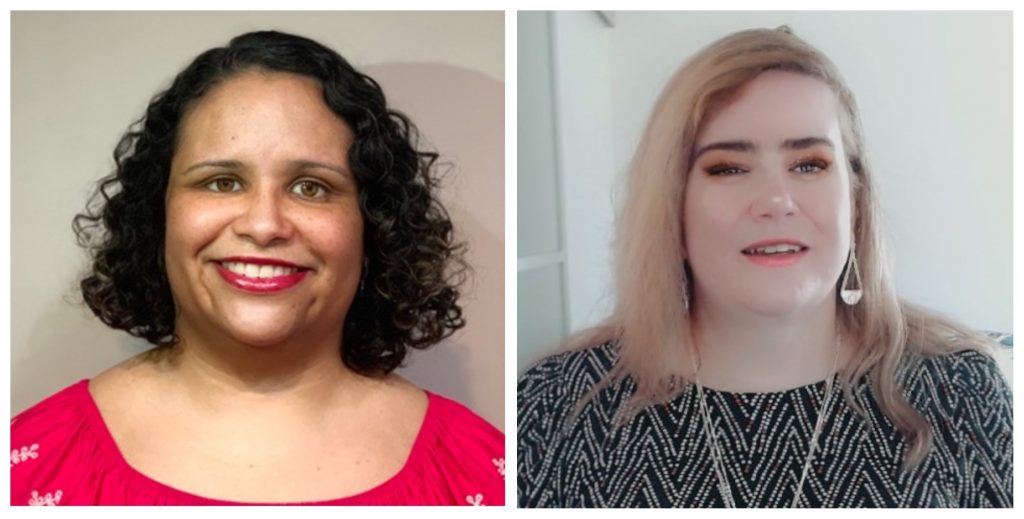This post was co-authored by Lead Disability Inclusion Consultant Mary Fernandez and Accessibility Program Manager Monica Wegner.

When we share that we work on accessibility and disability inclusion at Cisco, people might think, “That’s nice, but it really doesn’t affect me”—but that’s where they are wrong.
Unlike other identities—such as race, color, religion, gender, sexual orientation, national origin, age, and veteran status—anyone can suddenly find themselves disabled. In fact, if we’re fortunate to live long enough, each of us will eventually develop some kind of disability, whether it be short-term (something as common as breaking a bone) or something more permanent.
This is why the accessibility and disability inclusion work we do as part of Cisco’s Social Justice Actions is so critical. Because any of us can be—and nearly all of us will be—disabled at some point in our lifetime.
As we commemorate the 33rd anniversary of the Americans with Disabilities Act, we reflect on the ways in which we have improved accessibility for our employees, partners, suppliers, and customers, and acknowledge the path we have yet to travel.
Accessibility is the principle that everyone, regardless of their abilities, can access and use the same things—whether that’s a physical location, technology, systems, or content. Cisco’s Social Impact Office looks at accessibility and disability inclusion through each of these lenses, recognizing the many ways in which Cisco engages with humans. This spans the recruiting and employment experience, our products and services, and how we interact with customers, partners and suppliers.
“Unlike other identities—such as race, color, religion, gender, sexual orientation, national origin, age, and veteran status—anyone can suddenly find themselves disabled.”
In addition to being subject matter experts in accessibility and disability inclusion and consultants to Cisco teams, we work on the Social Justice Action 12 accessibility workstream which relates to human rights in technology solutions. Specifically, we are responsible for assessing the state of accessibility at Cisco, proposing a strategy for improving accessibility throughout the enterprise, and moving that work forward.
To see where Cisco’s accessibility and disability inclusion gaps are, we conducted interviews with more than 100 people across every area of our business, including several focus groups with people who identified as disabled or neurodivergent.
This research confirmed that there is still a tremendous opportunity to make Cisco and all our products truly accessible and inclusive–an effort that requires participation at all levels of the company as well as a mindset shift in how we conduct business.
The business imperative is clear: increasingly, our customers are asking us about accessibility. We have also seen some instances where customers—particularly government buyers, educational institutions, and businesses in regulated industries—have formalized requirements for accessibility. Technology that does not meet these standards won’t be considered.
“Accessibility is the principle that everyone, regardless of their abilities, can access and use the same things—whether that’s a physical location, technology, systems, or content.”
As leaders of this work, one thing we have been pleased to see is Cisco’s public commitment to focusing on the disability and neurodivergent communities and putting accessibility on the executive agenda through participating in the Valuable 500, a global group of 500 companies working to end disability exclusion. As a part of our Valuable 500 commitment, Cisco has pledged to take action in four areas that support our belief that equal access to our products and workplace is a fundamental human right:
- We will design with human rights in mind
- We will increase economic opportunities for people with disabilities
- We will invest in training to support the recruiting, hiring, retention, and promotion of employees with disabilities
- We will establish a permanent, dedicated accessibility infrastructure that is both resourced and accountable
Cisco’s public commitment to doing this work and holding ourselves accountable for our progress is important to disabled people, but, really, it’s important to all of us. Our purpose is to power an inclusive future for all. This means the technology and services we provide to our customers, partners, suppliers, and employees should be accessible to all. And while we are making progress, we still have work to do.
Learn more about Accessibility at Cisco, and read the 2022 Purpose Report to find out how we’re powering an inclusive future for all through our Social Justice Actions.


great work